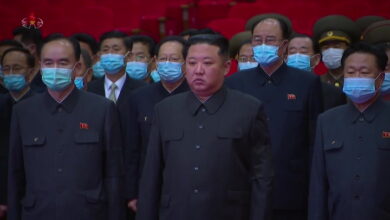Europe’s economic blahs drag on with zero growth at the end of last year

Europe’s economy failed to expand at the end of 2023, with the stagnation now lasting for more than a year amid higher energy prices, costlier credit and lagging growth in powerhouse Germany.
Zero economic growth for the October-to-December period of last year follows a 0.1% contraction in the three months before that, according to figures released Tuesday by EU statistics agency Eurostat.
That extends a miserable run of economic blahs: The 20 countries that use the euro currency have not shown significant growth since the third quarter of 2022, when the economy grew 0.5%.
And the start of this year looks no better, with indicators of business activity still flashing red for contraction. Plus, disruptions to shipping in the Red Sea have constricted global trade through the Suez Canal, a major route between Asia and Europe, surging shipping costs and threatening to boost inflation.
The eurozone “is still struggling to find a bottom,” said Holger Schmieding, chief economist at Berenberg bank.
The figures Tuesday underlined the growing divide between Europe and the United States, whose economy grew 0.8% in the fourth quarter compared with the previous three-month period, or an annual pace of 3.3% — better than expected.
Not all the news is bad. For one thing, unemployment is at record lows and the number of jobs rose in the July-to-September quarter.
Energy prices also have come down from recent spikes — though they remain higher than before Russia invaded Ukraine — and storage levels of natural gas, which is used to heat homes, power factories and generate electricity, are robust. With gas storage 72% full and most of the winter heating season nearly over, fears of higher utility bills and another energy crisis have eased.
While the economy has stagnated, inflation also has declined rapidly from its painful double-digit peak, falling to 2.9% in December. But people’s pay and purchasing power are still catching up to the levels lost through the price surge.
Meanwhile, the anti-inflation medicine applied by the European Central Bank — sharply higher interest rates — has curbed business investment and real estate activity like construction and home sales.
Europe’s biggest economy, Germany, also has been bogged down with higher fuel prices for energy-intensive industries after Russia cut off most of its natural gas to the continent. And Germany is facing a lack of skilled workers and years of underinvestment in infrastructure and digital technology in favor of balanced budgets.
While the incoming numbers “don’t point to a significant improvement” and could signal another slight contraction in the first three months of this year, the eurozone should benefit from falling inflation that is restoring consumer purchasing power and expected lower interest rates, according to economists at Oxford Economics.
Analysts expect the ECB to cut interest rates this year — some predicting as early as April, and others thinking the central bank may wait until June to ensure inflation is definitely under control.
But risks remain, including the attacks by Yemen’s Houthi rebels on ships in the Red Sea, where 12% of global trade passes, amid Israel’s war on Hamas.
Transport costs have risen as shipping companies route vessels around the southern tip of Africa, adding a week or more to voyages. With higher shipping costs and delays to products from clothes to keyboard components, concerns are growing of new consumer price spikes if the conflict in Gaza drags on or escalates.
The trade disruption could add as much as 0.5% to core inflation, which excludes volatile fuel and food prices, Oxford Economics said. Core inflation is closely watched by the ECB.
“We think the impact on core inflation will be enough for the ECB to wait a little bit longer,” delaying lower rates to June, Oxford Economics analysts said in a note.





